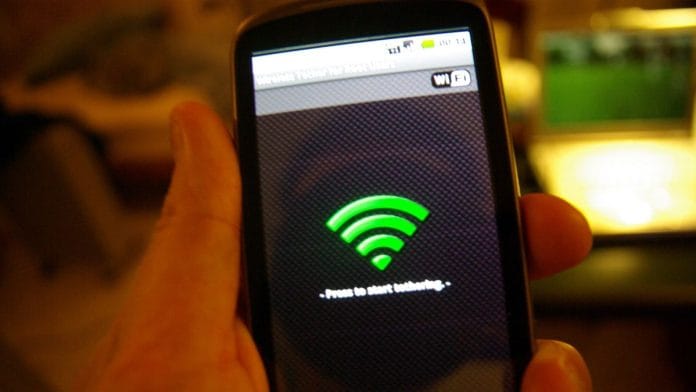New Delhi: The Telecom Regulatory Authority of India (TRAI) has recommended capping Internet tariffs for Wi-Fi service providers under the Prime Minister’s Wi-Fi Access Network Interface (PM-WANI) scheme at twice the rate for retail broadband, a departure from its earlier stance on the issue.
PM-WANI, a public Wi-Fi initiative, is aimed at increasing Internet access in the country but has failed to garner traction over the four years since its inception.
The PM-WANI scheme, approved by the Union Cabinet headed by Prime Minister Narendra Modi in December 2020, proposed to set up public Wi-Fi hotspots across the country via Public Data Offices (PDOs). These PDOs—akin to cybercafés—could be small establishments such as tea sellers or kirana shops.
In August 2024, in an attempt to revitalise the programme, the TRAI had proposed that tariffs for broadband services provided to PDOs be the same as those applicable for retail broadband connections. The new proposal—capping tariffs for PDOs at double the tariffs set by retail broadband companies—follows a consultation process with stakeholders on the earlier draft as well as a key policy change by the Department of Telecommunications.
ThePrint had reported in August last year that the scheme had been failing to meet its target, with only 2,07,642 PM-WANI Wi-Fi hotspots deployed across the country as of July 2024. This figure falls well short of the target of 50 lakh public Wi-Fi hotspots by 2020 and 1 crore by December 2022 set by the National Digital Communications Policy (NDCP) 2018.
In the draft The Telecommunications Tariff (Seventy-First Amendment) Order, 2025, the telecom regulator has proposed that broadband tariffs for PDOs under the PM-WANI scheme “shall not exceed twice the tariff applicable for retail broadband FTTH services for the corresponding capacity offered by the respective service provider”.
In other words, if a retail fibre-optic broadband user is paying Rs 100 for 100 Mbps, a PDO cannot be charged more than Rs 200 for a similar plan.
Also Read: Why Starlink’s India troubles signal the next big battle for space internet
Why PM-WANI is not so successful
A key reason behind the lack of success of the PM-WANI scheme is the significantly high cost of backhaul Internet connectivity that telecom service providers (TSPs) and Internet service providers (ISPs) charge the PDOs.
The TSPs and ISPs often require PDOs to connect public Wi-Fi access points using expensive Internet leased lines under the guise of commercial agreements. In the August consultation paper, the regulator had also noted that PDOs pay at least 40-80 times more for 100 Mbps of Internet leased line compared to what consumers pay for 100 Mbps of fibre broadband connection.
The regulator had also pointed out that the average daily data usage per Wi-Fi hotspot was about 1 GB until 2023, but fell to just a few MBs, which is less than the monthly average data limit being provided to retail broadband customers. Therefore, due to low data utilisation, PDOs could use retail broadband connections instead of requiring an Internet Leased Line (ILL) connection.
Following the consultation, the Department of Telecom in September 2024 amended the PM-WANI framework and removed the requirement for PDOs to enter commercial agreements with TSPs for Internet connectivity.
The regulator, in its latest draft rules, has noted that given the amendment by the Department of Telecom and the comments/counter-comments received from stakeholders, there is a “need to rationalise broadband tariffs”. The regulator stated that while the tariff framework should safeguard the interests of PDOs, it should also protect the interests of service providers, as PDOs function as resellers of bandwidth.
“It is important to highlight that Public Data Offices (PDOs) operate as bandwidth resellers, selling the bandwidth to multiple subscribers, positioning themselves as potential competitors to service providers,” TRAI noted, adding that it is both “logical and rational” that such a connection should be offered at a price higher than what is typically charged to a regular retail customer.
The regulator also reasoned that for retail FTTH (fibre-to-the-home) operations, the average data usage per connection is less than 500 GB per month, and, taking Fair Usage Policy (FUP) limits into account, a service provider may generate revenue from about seven connections or so for the same network capacity. As per the Fair Usage Policy, a service provider may restrict Internet speed for a customer when certain data usage parameters/limits are reached.
Further, the regulator noted that when a single PDO consumes large volumes of data, service providers derive revenue from only one customer. “Hence, the Authority feels that the service providers are required to be adequately compensated for the higher cost implications of supporting such usage.”
(Edited by Radifah Kabir)






